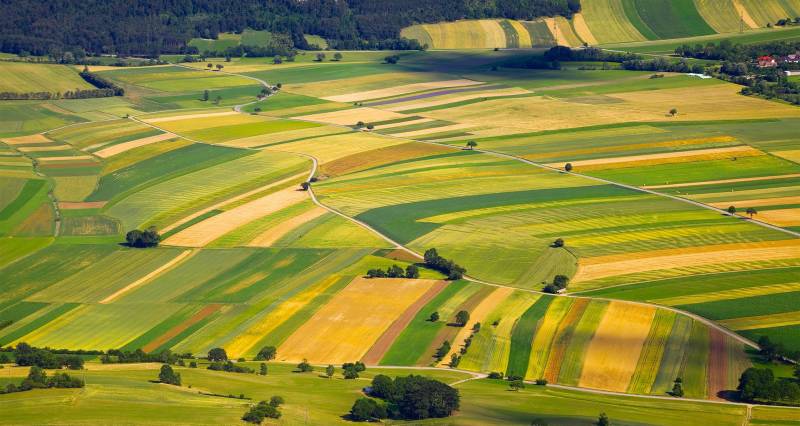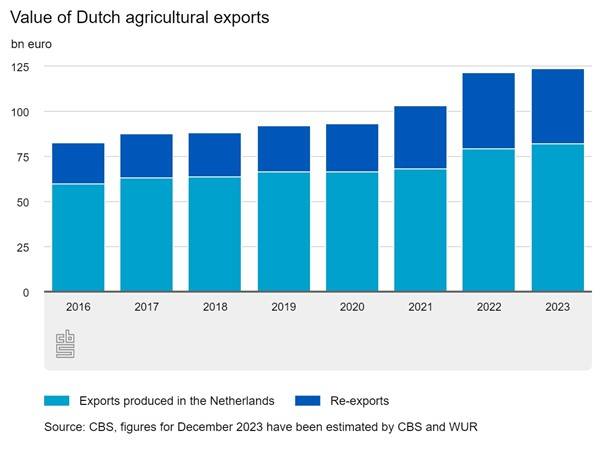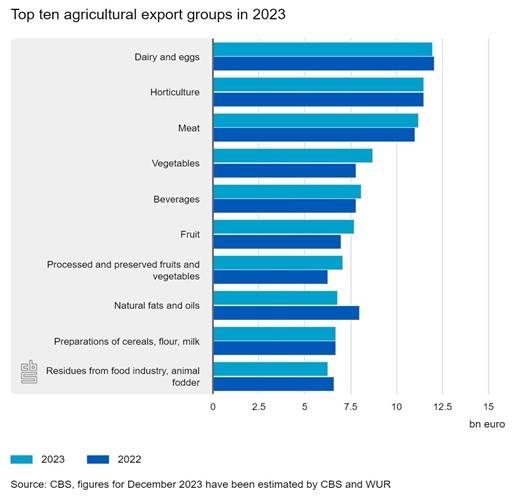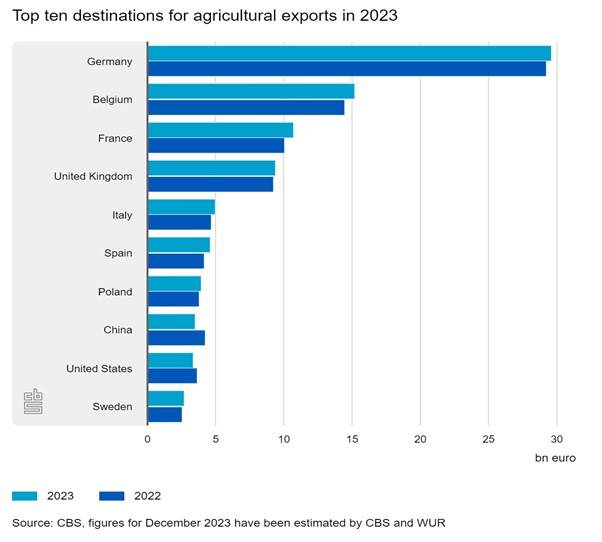
I received a lot of feedback, both positive and negative, after the publication of my last article: The Crisis of Competence. Leaving aside the debate of democratic evolution vs the urgency of facing the two ticking time bombs of a rapidly growing and young population, and public debt level reaching the alarming levels of 80% of GDP, I thought it would be insightful to present a case study of what competence can accomplish in a relatively short period and how the world is moving ahead.
Despite its relatively small size, the Netherlands has emerged as a global powerhouse in agriculture, renowned for its innovative techniques, efficient production methods, and high-quality agricultural products. The country’s agricultural exports grew from $33 billion in 2001 to $133 billion in 2023, making it the 2nd largest exporter of agricultural products after the United States.
The Netherlands, often dubbed as the "breadbasket of Europe," has a rich history of agricultural development and export. With a population of 17.9 million people (less than that of Karachi), all living within a total area of 16,160 square miles (about 1/4th of the area of Bangladesh) —of which the land area is 12,900 square miles—the Netherlands is the 33rd most densely populated country, with a density of 1,390 people/square mile.
Like India and Pakistan, agriculture has been integral to the Dutch economy for centuries, dating back to the early medieval period. The fertile soil of the low-lying regions, coupled with the innovative spirit of the Dutch people, laid the foundation for agricultural prosperity. Historically, the Dutch have been pioneers in land reclamation, employing advanced techniques such as poldering to reclaim land from the sea and marshes for agricultural use. This innovative approach enabled the expansion of arable land and facilitated agricultural growth.
The rallying cry in the Netherlands started just two decades ago, as concern mounted about its ability to feed its 17 million people: produce twice as much food using half as many resources.
The country not only accomplished this feat, but also has become the world’s second-largest exporter of agricultural products by value after the United States, leaving behind large countries like Canada and France.

Perhaps even more significant in the face of a warming planet: It is among the largest exporters of agricultural and food technology. The Dutch have pioneered cell-cultured meat, vertical farming, seed technology and robotics in milking and harvesting — spearheading innovations that focus on decreased water usage as well as reduced carbon and methane emissions.
Dutch agricultural exports are well diversified. The top three exports in 2023 were dairy and egg, followed by horticultural exports in second place and meat exports in third place.

Germany has traditionally been the main buyer of agricultural goods from the Netherlands and in 2023 too, Germany was the destination for almost a quarter of all Dutch agricultural exports. However, it is interesting to point out that the exports to China are now close to $5 billion.

Research and Technology
Farming is large-scale and intensive. Only 2.5% of employment is in agriculture and 1.5 % in the food industry. Productivity and yields per hectare are high. Farmers use a high level of fertilisers and plant protection products. 75% of the agricultural land is classified as high input per hectare, compared to an overall average of 26% in the European Union as a whole.
The establishment of agricultural research institutions, such as Wageningen University & Research (WUR), played a crucial role in driving innovation in Dutch agriculture. These institutions fostered research and development in areas such as plant breeding, soil management, and sustainable farming practices, contributing to increased yields and efficiency.
The Netherlands also embraced modern technologies and mechanization, with the widespread adoption of tractors, irrigation systems, and greenhouse technology. The use of greenhouses, in particular, revolutionized vegetable and flower cultivation, allowing for year-round production and ensuring a steady supply of fresh produce to domestic and international markets.
Export-Oriented Strategy
The Dutch agricultural sector has long been oriented towards export, leveraging its strategic location, efficient logistics infrastructure, and reputation for quality and reliability. The country's favourable climate and soil conditions make it well-suited for the cultivation of a wide range of crops, including vegetables, fruits, flowers, and dairy products.
The Dutch government has actively supported the export-oriented approach, providing incentives and support to agricultural enterprises seeking to expand their presence in international markets. Trade agreements and partnerships with other countries have facilitated market access and promoted the export of Dutch agricultural products worldwide.
Success Factors
Several factors have contributed to the success of Dutch agriculture and its export industry. One key factor is the collaborative approach adopted by various stakeholders, including farmers, researchers, government agencies, and industry associations. This collaborative ecosystem fosters innovation, knowledge sharing, and continuous improvement, ensuring the sector remains competitive on the global stage.
Investment in education and vocational training has also been instrumental in cultivating a skilled workforce capable of leveraging advanced technologies and best practices in agriculture. Additionally, the emphasis on sustainability and environmental stewardship has positioned Dutch agriculture as a leader in responsible farming practices, resonating with consumers increasingly concerned about food quality and environmental impact.
Dutch agriculture is poised to embrace emerging trends such as precision agriculture, digitalization, and vertical farming, which promise to further enhance efficiency, productivity, and sustainability. By continuing to invest in research, education, and infrastructure, the Netherlands plans to sustain its position as a global leader in agriculture and the export of agricultural goods.
The success of Dutch agriculture is a testament to decades of innovation, adaptation, and collaboration. Through strategic investments in research, technology, and export-oriented policies, the Netherlands has established itself as a powerhouse in agriculture, supplying high-quality products to markets around the world. As the sector evolves to meet new challenges and opportunities, the Dutch commitment to excellence and sustainability is likely to ensure its continued leadership in the global agricultural landscape.
The Dutch success story has many lessons for Pakistan, but if I have to choose only a couple, they would be that there are no shortcuts to an export-led growth strategy and that knowledge and technology are critical to achieving success in the modern world.

